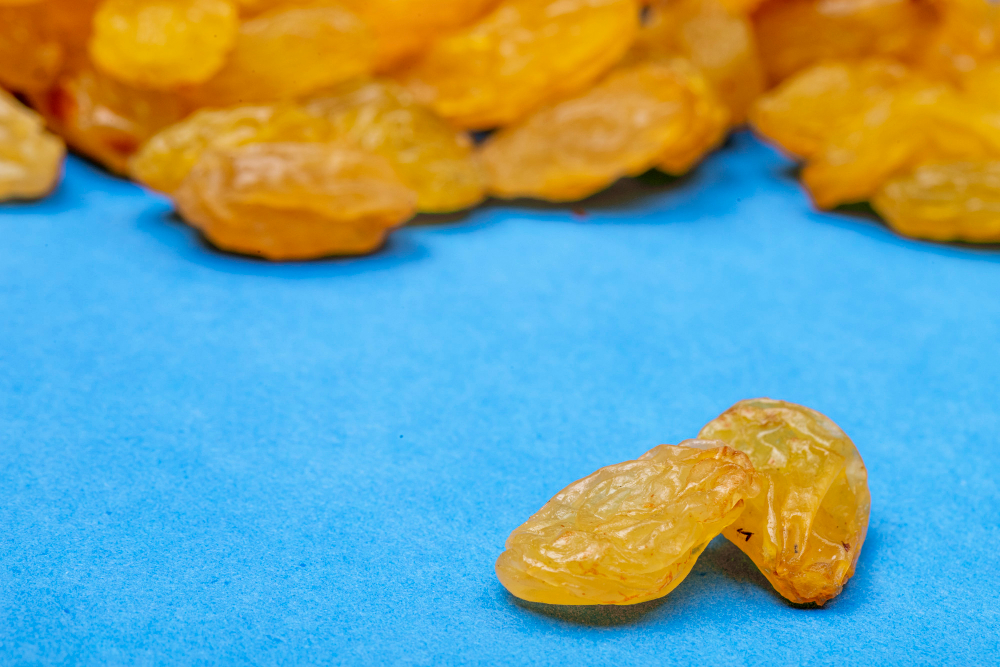Understanding Water Activity and Its Impact on Mold Growth in Sultana Raisins
Water activity plays a crucial role in determining the shelf life and safety of dried fruits like sultana raisins. While these raisins appear dry, the moisture available at the microscopic level—the water activity—can significantly influence mold growth during storage. Understanding this relationship is essential for anyone involved in importing, exporting, or storing sultana raisins in bulk.
What Water Activity Means for Dried Fruits
Water activity measures the free water available in a product that supports microbial growth. It differs from moisture content, which is the total water present. In sultana raisins, water activity levels typically range between 0.50 and 0.65. This range is critical because mold and other fungi need a certain level of available water to grow.
our product: dark Sultana raisins
How Water Activity Encourages Mold During Storage
Mold spores can be dormant on dried fruits but will grow actively once the water activity exceeds a certain threshold, usually around 0.70 for many mold species. If sultana raisins are stored in environments with high humidity or temperature, their water activity may increase, creating conditions ripe for mold formation. This risk is particularly high during long-term storage or transit under fluctuating conditions.
Common Mold Species and Their Water Activity Thresholds
Several molds commonly affect stored raisins, such as Aspergillus and Penicillium species. These molds generally require water activity levels above 0.70 to develop. When storage conditions allow water activity to reach or surpass this level, spoilage accelerates, leading to product loss and health risks.
Environmental Factors Affecting Water Activity in Raisins
Humidity and temperature are the two most influential external factors. High ambient humidity causes raisins to absorb moisture, raising their water activity. Similarly, elevated temperatures increase water mobility inside raisins, encouraging microbial growth. Proper climate-controlled storage can stabilize water activity and reduce mold risk.
Recommended Water Activity Levels to Minimize Mold
To prevent mold growth, sultana raisins should be stored with water activity levels maintained below 0.65. This range limits fungal growth while preserving raisin texture and quality. Achieving this requires controlled environments with low humidity and moderate temperatures.
read more: Oil Coating Methods in Sultana Raisins: Comparing Paraffin, Vegetable Oils, and Their Residue Risks
Best Practices for Controlling Water Activity in Bulk Storage
- Monitor water activity regularly using reliable meters designed for dried fruit.
- Maintain storage humidity below 60 percent to prevent moisture absorption.
- Use temperature-controlled warehouses to keep conditions stable.
- Ensure airtight packaging to minimize moisture ingress during transport.
- Rotate stock to avoid prolonged storage times that increase mold risk.
Monitoring Techniques for Maintaining Raisin Quality
Accurate water activity measurement is vital for quality control. Modern handheld meters provide quick, on-site readings, allowing operators to detect early signs of moisture increase before mold appears. These tools support proactive management, ensuring only quality raisins reach the market.
Frequently Asked Questions
What is water activity in sultana raisins?
Water activity refers to the amount of free water available for microbial growth in raisins, different from total moisture content.
At what water activity level does mold start to grow on raisins?
Most molds begin to grow when water activity exceeds 0.70.
How can storage conditions affect water activity?
High humidity and temperature increase water activity by allowing raisins to absorb moisture and increase internal water mobility.
What are the best storage practices to prevent mold in sultana raisins?
Maintain humidity below 60%, control temperature, use airtight packaging, and monitor water activity regularly.
Can mold form on raisins that appear dry?
Yes, because surface dryness doesn’t always reflect water activity inside, which determines mold growth potential.

